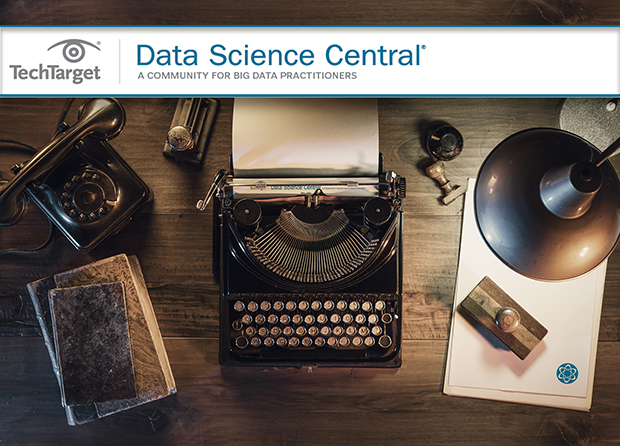Author: Kurt A Cagle
|
Data Science Central Weekly Digest, 11 Jan 2021
What is the future of work?
Data analysts often find, when faced with unquantifiable variables, that one can use quantifiable variables as proxies. Given this question, perhaps the most closely related proxy is: How much of your “job” involves interacting through a screen? It’s likely that, for many jobs, this has changed dramatically in the last year, as we’ve been forced to do everything from medicine to politics to concerts virtually. The economy, as bad as it is, would have been in far worse shape if most people hadn’t already been moving towards online shopping. Fulfillment has become increasingly done through robotic agents, and manufacturing now is nearly fully automated.
Security and monitoring actually provide an interesting case study. AI-driven cameras can readily detect movement and can log unusual events. Drones are poised to provide mobile camera support as well, to replace the physical guard with a virtual one at a station (or in their home), with AI-decision-making bots in the not too distant future. Take this and apply it to teaching, to the production of most creative products, to farming, medicine, and so forth, and what emerges is a society in which physicality – the need to be physically present to perform a task – all but disappears.
This doesn’t mean these jobs go away, but once you break the requirement that the screens have to be confined to a single specific building, it does mean that the value of the office, of the workplace, becomes a far less significant factor in how jobs are performed. It also means that data security does not involve confinement of the computers in one place, but rather, providing the data that’s needed to just the right screens.at the right time, and increasingly using that data itself to facilitate actions.
For the data science profession, in particular, this shift in thinking is critical. The future of data analysis is not Python or R, it’s DevOps. It’s using analytic tools to design conditional logic that sits on a data stream and acts when a particular p-value deviates too far from the norm. It’s using neural nets and reinforcement learning to tailor experiences for users or to teach humans as well as silicon. It’s filling in the missing pieces of a model with a reasonable facsimile – the proxy in 3D – to build better worlds for interactions, or to provide valid data in the holes where data is not.
At least in this sector. The future of work is data and the intelligent use thereof.
Data Science Central is your community. It is a chance to learn from other practitioners, and a chance to communicate what you know to the data science community overall. I encourage you to submit original articles and to make your name known to the people that are going to be hiring in the coming year. As always let us know what you think.
|
|
|
|
Announcements Earn your Online MS in Data Science in as few as 5 semesters and develop the analytical skills to interpret data and strategically address today’s biggest challenges. With four specializations, innovative curriculum with practical application, and the option to do your final thesis online, the 100% online program is built to help you achieve your career goals. No GRE/GMAT required. Learn more.
DSC Featured Articles
|
|
Picture of the Week
|
|
To make sure you keep getting these emails, please add mail@newsletter.datasciencecentral.com to your address book or whitelist us.
Subscribe to our Newsletter | Comprehensive Repository of Data Science and ML Resources
Follow us on Twitter: @DataScienceCtrl | @AnalyticBridge This email, and all related content, is published by Data Science Central, a division of TechTarget, Inc.
275 Grove Street, Newton, Massachusetts, 02466 US
|


